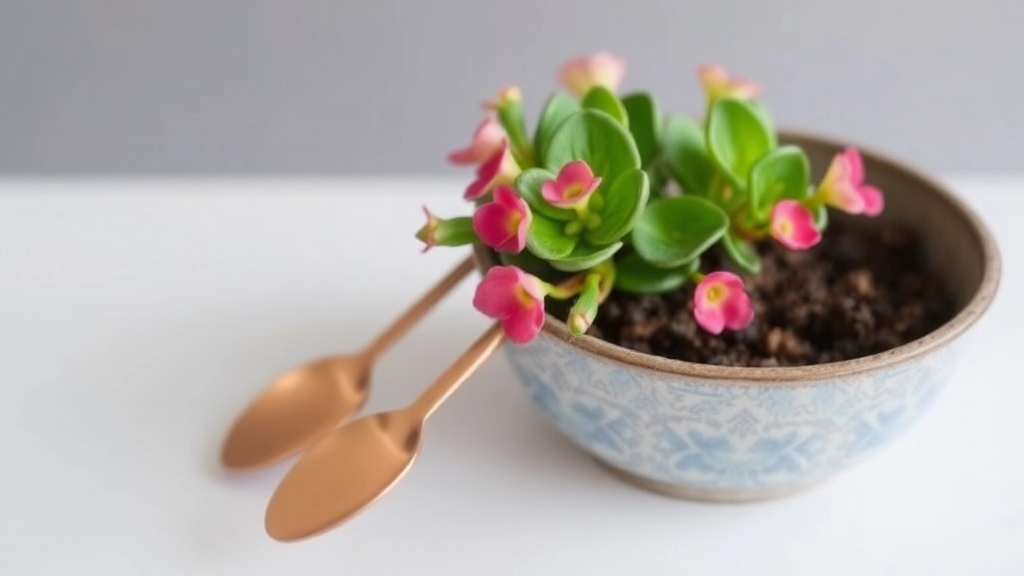Mastering Kalanchoe Copper Spoons Care
Looking to master Kalanchoe Copper Spoons care? You’re in the right place. This succulent, known for its striking copper-hued leaves, thrives with the right balance of light, water, and care. Let’s dive into the essentials to keep your Copper Spoons healthy and vibrant.
Light Requirements
First off, light is crucial. Place your Kalanchoe orgyalis in a spot with bright, indirect sunlight. Too much direct sun can scorch the leaves, while too little light will cause them to become leggy.
Watering Tips
Next, water sparingly. Allow the soil to dry out completely between waterings to prevent root rot. A well-draining soil mix is your best friend here, ensuring excess water doesn’t linger.
When it comes to caring for your Kalanchoe Orgyalis, understanding its light requirements is crucial.
You might be wondering, âHow much light does my Copper Spoons plant really need?â
Copper Spoons thrive in bright, indirect sunlight, making them perfect for windowsills or well-lit rooms.
– **Bright Indirect Light**: Aim for 6-8 hours of filtered sunlight each day.
– **Avoid Direct Sunlight**: Too much direct sun can scorch the leaves, leading to unsightly brown patches.
– **Artificial Light**: If natural light is limited, consider using grow lights to supplement.
I’ve found that placing them near a south or west-facing window works wonders.
If you notice the leaves stretching towards the light, it’s a sign your plant needs more brightness.
Conversely, if the leaves are turning yellow, it might be getting too much light.
As you adjust the lighting conditions, keep an eye on how your Copper Spoons respond. For more detailed guidance on caring for your succulents, check out this [complete guide to kalanchoe plant care](https://planthq.org/complete-guide-to-kalanchoe-plant-care/).
Additionally, if you’re interested in learning about different varieties and their specific needs, you might find this [top flowering kalanchoe species and care tips](https://planthq.org/top-flowering-kalanchoe-species-and-care-tips/) article helpful.
Watering Frequency and Techniques
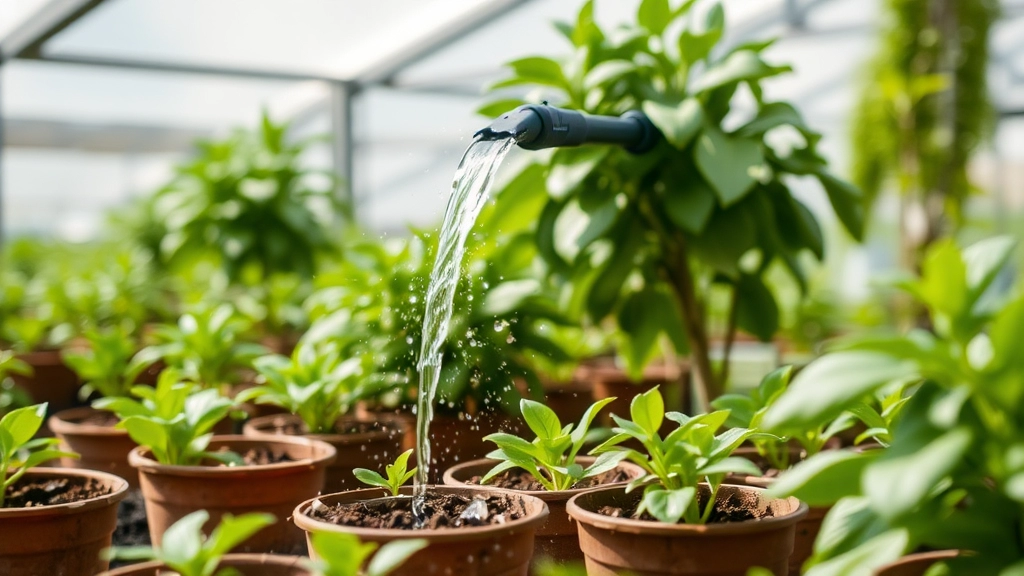
So, you’ve got your Copper Spoons, and now you’re wondering how often to water them, right? It’s a common worry among plant parents.
Finding the Right Balance
Copper Spoons, or Kalanchoe Orgyalis, thrive in a well-draining environment, which means overwatering is a big no-no. Here’s how to get it just right:
- Watering Frequency: Aim to water every 2-3 weeks during the growing season (spring and summer). In winter, cut back to once a month.
- Check the Soil: Stick your finger about an inch into the soil. If it’s dry, it’s time to water. If it’s still moist, hold off for a bit.
- Watering Technique: When you do water, give it a good soak until you see drips from the drainage holes. This encourages deep root growth.
Tips for Success
- Use Room Temperature Water: Cold water can shock the plant.
- Avoid Watering Leaves: Focus on the soil to prevent rot.
- Consider the Pot: If your pot has good drainage, you’re already ahead of the game.
Soil Type and Drainage Recommendations
When cultivating Copper Spoons (Kalanchoe Orgyalis), one of the most pressing concerns is the right soil type and drainage.
Why is Soil Important?
The soil you choose directly impacts the health and growth of your plant. Copper Spoons thrive in well-draining soil that mimics their natural habitat.
Soil Type
- Cactus Mix: A pre-made cactus or succulent mix works wonders.
- DIY Mix: If you prefer a homemade blend, combine:
- 2 parts potting soil
- 1 part coarse sand
- 1 part perlite or pumice
This combination ensures the soil retains some moisture while allowing excess water to drain away.
Drainage Recommendations
Good drainage is crucial to prevent root rot, a common issue with Copper Spoons. Here are a few tips to enhance drainage:
- Pot Selection: Use pots with drainage holes. Terracotta pots are ideal as they allow moisture to evaporate.
- Layering: Add a layer of small stones or gravel at the bottom of the pot before adding soil. This helps water flow freely.
- Avoid Overwatering: Always check the soil moisture before watering. The top inch should be dry to the touch.
By focusing on the right soil type and ensuring proper drainage, you set the stage for a thriving Copper Spoon plant. If you’re looking for more detailed advice on soil and care, check out our best soil for Kalanchoe Blossfeldiana care tips and our complete guide to Kalanchoe plant care.
Managing Temperature and Humidity for Optimal Growth
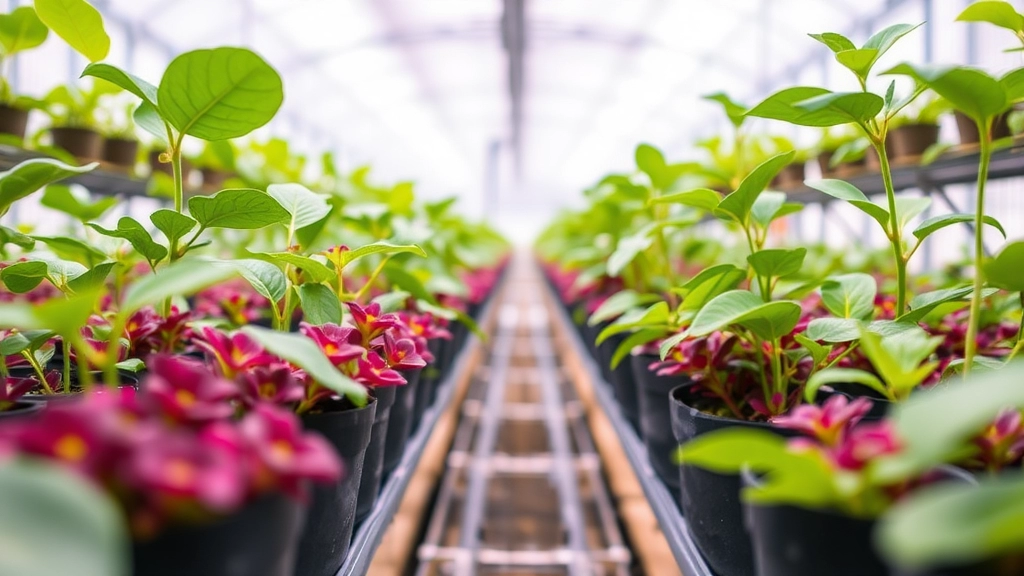
When it comes to cultivating your Kalanchoe Orgyalis, also known as Copper Spoons, managing temperature and humidity is crucial for their overall health and vitality. You might be wondering, “What temperature is ideal for my Copper Spoons?” or “How do I maintain the right humidity levels?” Let’s dive in.
Ideal Temperature Range
Copper Spoons thrive best in temperatures between 18°C and 24°C (65°F to 75°F).
- Daytime: Aim for the upper end of this range.
- Nighttime: A slight drop to around 15°C (59°F) is acceptable.
Key Points:
- Avoid exposing your plants to temperatures below 10°C (50°F).
- Consistent temperatures are better than fluctuating ones.
Humidity Levels
Kalanchoe Orgyalis prefers moderate humidity levels, ideally around 40% to 60%.
- Low Humidity: If your home is too dry, consider using a humidifier or placing a tray of water near your plants.
- High Humidity: Ensure good air circulation to prevent mold and mildew, which can harm your plants.
Tips for Maintaining Optimal Conditions
- Location: Place your Copper Spoons in a well-ventilated area, away from drafts and direct heat sources.
- Monitoring: Use a thermometer and hygrometer to keep an eye on temperature and humidity levels.
- Seasonal Adjustments: Be prepared to adjust your setup during the colder months or when using heating systems.
When it comes to keeping your Kalanchoe Orgyalis, commonly known as Copper Spoons, thriving, fertilizing is a crucial aspect that often raises questions. How do I ensure my plant gets the nutrients it needs without overdoing it?
### Understanding Fertilizer Needs
Copper Spoons benefit from a balanced, diluted fertilizer during their growing season, which typically spans from spring to early autumn. Here’s how to effectively fertilize your plant:
– **Choose the Right Fertilizer**:
– Opt for a balanced, water-soluble fertilizer with an NPK ratio like 10-10-10 or 20-20-20.
– **Dilution is Key**:
– Always dilute the fertilizer to half the recommended strength. This prevents nutrient burn and ensures your plant absorbs what it needs.
– **Frequency**:
– Fertilize every 4-6 weeks during the growing season.
– Avoid fertilizing in winter when the plant is dormant.
### Signs Your Plant Needs Fertilizer
Keep an eye out for these signs indicating your Copper Spoons may need a nutrient boost:
– **Pale Leaves**: A lack of vibrant colour can suggest nutrient deficiency.
– **Stunted Growth**: If your plant isn’t growing as expected, it might be time to fertilize.
### Additional Considerations
– **Organic Options**: Consider using organic fertilizers like fish emulsion or seaweed extract, which can provide a slow release of nutrients.
– **Soil Health**: Ensure that your soil is well-draining and rich in organic matter to complement your fertilization efforts.
For more tips on keeping your Kalanchoe plants healthy, check out our [essential fall Kalanchoe care tips for healthy blooms](https://planthq.org/essential-fall-kalanchoe-care-tips-for-healthy-blooms/). Additionally, if you’re interested in other types of Kalanchoe, you might find our [complete guide to Kalanchoe paddle plant care](https://planthq.org/complete-guide-to-kalanchoe-paddle-plant-care/) useful.
Pruning and Shaping for Aesthetic Appeal
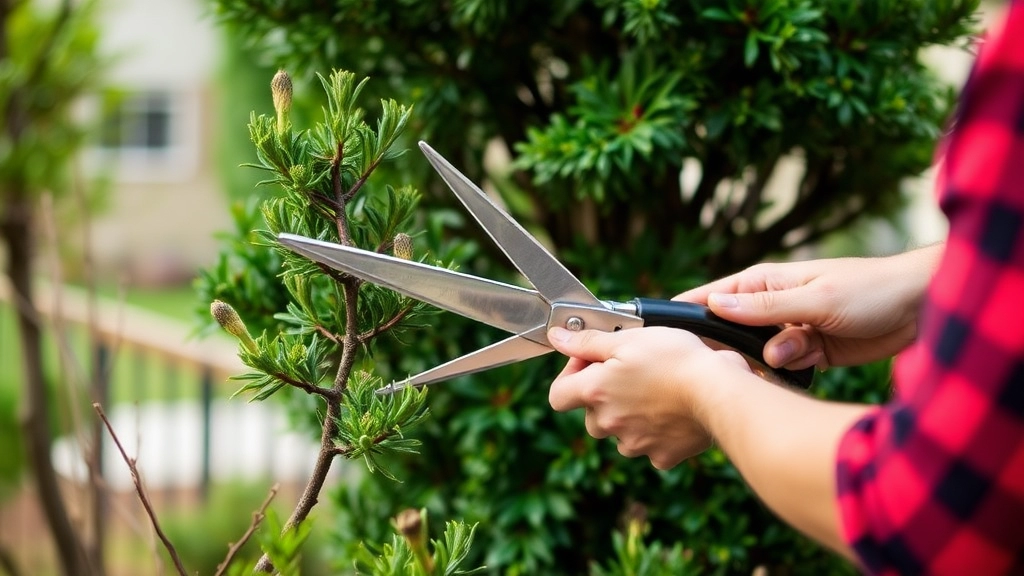
So, you’ve got your Copper Spoons (Kalanchoe Orgyalis) thriving, but how do you keep them looking their best?
Pruning isn’t just about keeping your plant healthy; it’s also a chance to shape it into a stunning centerpiece.
Here are some straightforward tips to help you prune and shape your Copper Spoons:
- Timing is Key: Late spring or early summer is the best time to prune. This is when your plant is actively growing and can recover quickly.
- Tools Matter: Use clean, sharp scissors or pruning shears. This prevents any damage and reduces the risk of disease.
- Identify the Right Spots: Focus on any dead or yellowing leaves. These are easy targets and will instantly improve the look.
- Shape It Up: Don’t be afraid to cut back stems to promote bushier growth. Aim for a rounded shape to enhance its natural beauty.
- Leave Some Leaves: Always leave a few leaves on each stem. This helps the plant continue photosynthesis and stay healthy.
- Watch for New Growth: After pruning, keep an eye out for new leaves. This is a good sign that your plant is responding well!
Pruning not only helps with aesthetics but also encourages healthier growth.
Preventing and Treating Common Pests
As we delve into the care of your Kalanchoe Orgyalis, it’s essential to address a concern that many plant enthusiasts face: pests.
Common Pests to Watch For
Kalanchoe Orgyalis, often known as Copper Spoons, can attract a few unwelcome guests. Here are the most common pests you might encounter:
- Mealybugs: These tiny, white, cotton-like bugs can be found on the leaves and stems.
- Aphids: Small and usually green, these pests suck the sap from your plant.
- Spider Mites: Tiny and often invisible to the naked eye, they leave fine webbing on the leaves.
- Scale Insects: These appear as small, brown bumps on the plant’s surface.
Preventive Measures
Preventing pest infestations is far easier than dealing with them once they take hold. Here are some practical steps you can take:
- Regular Inspections: Check your plant weekly for any signs of pests. Early detection is key.
- Clean Leaves: Wipe the leaves with a damp cloth to remove dust and potential pests.
- Proper Airflow: Ensure your plant is not overcrowded to promote good air circulation.
- Healthy Plants: A well-cared-for plant is less likely to attract pests, so follow the ideal light, watering, and soil guidelines.
Treatment Options
If you do find pests, don’t panic. There are effective treatments available:
- Insecticidal Soap: A safe option that can be sprayed directly on the pests.
- Neem Oil: This natural pesticide works well against various insects and is safe for your plant.
- Isopropyl Alcohol: Dab a cotton swab in alcohol and apply it directly to mealybugs and scale insects.
Monitoring and Follow-Up
After treatment, continue to monitor your plant for any signs of returning pests. For more detailed care guidelines, you might find our indoor vs outdoor care guide helpful. Additionally, understanding the tips for optimal blooms can enhance your plant’s overall health and resilience against pests.
How to Repot and Refresh Soil for Healthy Growth
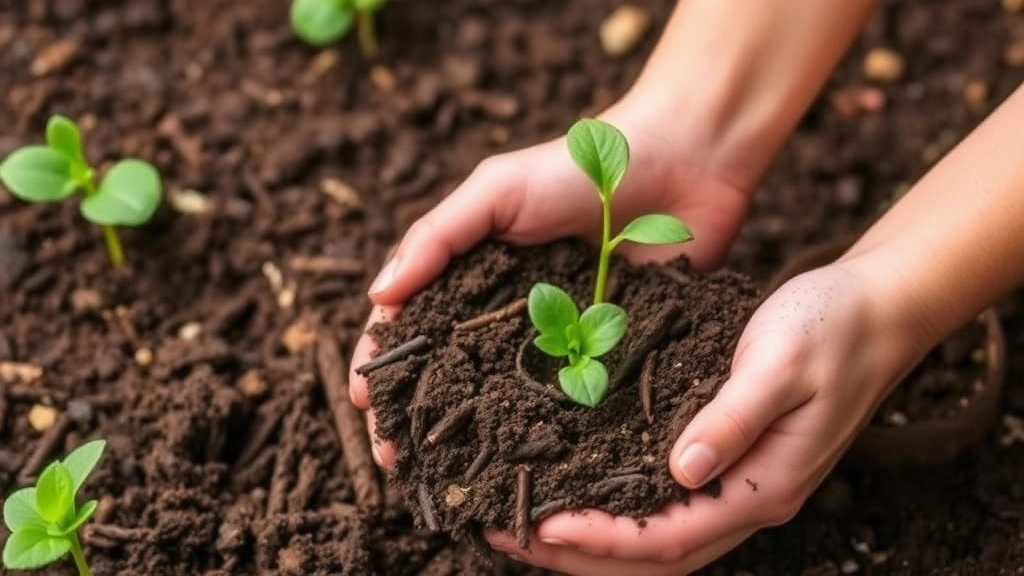
Are your Copper Spoons looking a bit cramped?
Repotting is essential for keeping your Kalanchoe Orgyalis thriving.
When to Repot
- Signs Your Plant Needs It:
- Roots are poking out of the drainage holes.
- The plant is top-heavy or falling over.
- Soil dries out too quickly.
What You’ll Need
- Fresh, well-draining soil (cactus mix is great).
- A pot that’s one size larger.
- Clean tools (scissors, trowel).
Steps to Repot
- Choose the Right Time: Early spring is ideal, just before the growing season kicks in.
- Remove the Plant: Gently squeeze the pot to loosen the soil, then tip it sideways to slide the plant out.
- Inspect the Roots: Trim any brown, mushy roots. Healthy roots should be white or light tan.
- Prepare the New Pot: Add a layer of fresh soil to the bottom.
- Position the Plant: Place your Copper Spoons in the centre and fill around it with soil.
- Water Thoroughly: After repotting, give it a good drink. This helps settle the soil.
Refreshing Soil
- Why Refresh Soil? Old soil can lose nutrients and retain too much moisture, leading to root rot.
- How to Do It:
- Every couple of years, consider refreshing the top layer of soil.
- Remove the top 1-2 inches and replace it with fresh soil.
Best Practices for Propagating Copper Spoons
Are you looking to expand your collection of Copper Spoons (Kalanchoe Orgyalis) without breaking the bank?
Propagation is a rewarding way to achieve this, and it’s easier than you might think.
Here are some effective methods to propagate your Copper Spoons successfully:
Seasonal Care Tips for Winter and Summer

When it comes to caring for your Copper Spoons, the changing seasons can feel like a rollercoaster ride.
Winter Care Tips:
During the colder months, your Kalanchoe Orgyalis needs a bit of extra TLC. Here’s how to keep it thriving:
- Light: Ensure it gets plenty of indirect sunlight. A south-facing window is ideal.
- Temperature: Keep it in a warm spot, ideally between 15°C to 24°C. Avoid cold drafts!
- Watering: Scale back on watering. Check the soil; if it’s dry a couple of inches down, it’s time for a drink. Overwatering is a no-go in winter.
- Humidity: Indoor heating can dry the air. Consider a humidity tray or occasional misting to keep things comfy.
Summer Care Tips:
As the temperature rises, your Copper Spoons will perk up and need a little more attention. Here’s what to keep in mind:
- Light: It loves bright, direct sunlight. Just be wary of scorching it in the afternoon.
- Watering: Increase the frequency, but always let the soil dry out between waterings.
- Temperature: Ideal range is still 15°C to 24°C, but it can handle a bit more warmth.
- Humidity: Summer air is usually more humid, which is great! Just keep an eye on the moisture level in the soil.
Remember, seasonal changes can affect your plant’s health.
How to Prevent Root Rot and Other Common Diseases
As we delve deeper into caring for your Kalanchoe Orgyalis, it’s crucial to address the issue of root rot and other diseases that can threaten its health.
Understanding Root Rot
Root rot is a common concern for many plant enthusiasts, especially for those of us nurturing succulents like Copper Spoons.
Key Indicators of Root Rot:
- Wilting Leaves: Even when watered, leaves droop.
- Discolouration: Yellowing or darkened leaves can signal trouble.
- Foul Odour: A musty smell from the soil often indicates decay.
Prevention Strategies
To keep your Copper Spoons thriving, consider these simple yet effective strategies:
- Use Well-Draining Soil: Opt for a cactus or succulent mix that promotes quick drainage.
- Choose the Right Pot: Ensure pots have drainage holes to allow excess water to escape.
- Water Wisely: Only water when the top inch of soil feels dry. Overwatering is a primary cause of root rot.
- Monitor Humidity Levels: High humidity can exacerbate moisture retention in the soil. Aim for a drier environment.
Additional Disease Prevention
Beyond root rot, your Copper Spoons may face other diseases. Here’s how to keep them at bay:
- Avoid Overcrowding: Ensure good air circulation around your plants to prevent fungal infections.
- Inspect Regularly: Check for pests or signs of disease weekly. Early detection is key.
- Clean Tools and Pots: Sterilising your gardening tools and pots can prevent the spread of pathogens.
For more detailed care tips, you might find our complete guide on caring for Kalanchoe succulents and our article on causes and solutions for Kalanchoe leaves curling particularly useful.
FAQs on Kalanchoe Copper Spoons Care
How often should I water my Copper Spoons?
During the growing season (spring and summer), aim to water every 2-3 weeks. In winter, reduce watering to once a month. Always check the soil before watering; if it’s dry an inch down, it’s time to water.
What is the ideal temperature range for Kalanchoe Orgyalis?
Copper Spoons thrive best in temperatures between 18°C and 24°C (65°F to 75°F). Avoid exposing them to temperatures below 10°C (50°F).
How do I maintain the right humidity levels?
Kalanchoe Orgyalis prefers moderate humidity levels, ideally around 40% to 60%. If your home is too dry, consider using a humidifier or placing a tray of water near your plants.
When is the best time to prune my Copper Spoons?
Late spring or early summer is ideal for pruning as the plant is actively growing and can recover quickly. Use clean, sharp scissors or pruning shears to prevent damage and reduce the risk of disease.
How can I tell if my Copper Spoons need repotting?
Signs that your plant needs repotting include roots poking out of the drainage holes, the plant becoming top-heavy or falling over, and soil that dries out too quickly. Early spring is the best time to repot.
What type of soil is best for Kalanchoe Orgyalis?
A well-draining soil mix, such as cactus mix, is ideal for Copper Spoons. This helps prevent waterlogging and root rot.
How do I care for my Copper Spoons during winter?
In winter, ensure your plant gets plenty of indirect sunlight and keep it in a warm spot between 15°C to 24°C. Reduce watering and consider using a humidity tray or occasional misting to combat dry indoor air.
What should I do to care for my plant in the summer?
In summer, provide bright, direct sunlight but avoid scorching the plant in the afternoon. Increase watering frequency, but let the soil dry out between waterings. Maintain the temperature between 15°C to 24°C and monitor soil moisture levels.
Why is refreshing the soil important, and how often should I do it?
Refreshing the soil is important because old soil can lose nutrients and retain too much moisture, leading to root rot. Consider refreshing the top layer of soil every couple of years by removing the top 1-2 inches and replacing it with fresh soil.
Can I use cold water to water my Copper Spoons?
No, it’s best to use room temperature water as cold water can shock the plant. Focus on watering the soil rather than the leaves to prevent rot.
References
-
Gardening Know How – Kalanchoe Orgyalis (Copper Spoons)
-
Succulents and Sunshine – Kalanchoe Orgyalis (Copper Spoons)
-
World of Succulents – Kalanchoe Orgyalis (Copper Spoons)
